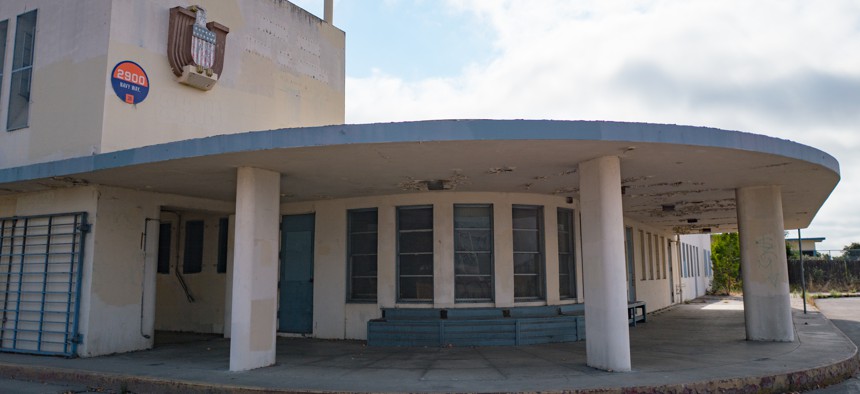Source GovExec 360
600 New Hampshire Ave NW, Suite 510, Washington DC 20037
A 2016 law says unused federal properties should be turned over to help the homeless. But a complex process and bureaucratic requirements are making that nearly impossible.
Media www.rajawalisiber.com – In Alameda, an island located in the San Francisco Bay, there’s an old federal maritime training center built in 1942 that has been sitting vacant for years. For almost as long, residents there have been batting around ideas for what to do with it. In 2019, they finally decided, approving a measure to use the space to house older homeless people.
The nonprofit Alameda Point Collaborative was given the nod to build a medical center on the 100-acre campus where homeless seniors would be able to stay after they’re released from hospitals, rather than ending up back on the streets.
The federal property sits by a park. So as they recover, said Doug Biggs, the nonprofit’s executive director, the seniors would be able to gaze out on San Francisco Bay.
“It’s conducive to healing,” he said. “This is a very calming, very soothing place. It’s just an amazing location to be able to offer this type of service.”
The plan also calls for building permanent housing for 100 seniors, which make up the fastest growing part of the area’s homeless population.
All of this is made possible by a 2016 federal law that says that properties the federal government doesn’t believe it needs anymore should be turned over to state and local governments or nonprofits to be used to help the homeless. But because of the way the program is being run, the project in Alameda remains just a plan on paper.
Alameda’s situation is far from unique, say housing advocates from the National Council of State Housing Agencies and the National Homelessness Law Center. At a time when cities are struggling with homelessness, they contend that there are many other federal properties sitting unused that could be converted into housing, like empty office buildings on a patch of land west of Denver.
In fact, there are nearly 8,000 federal properties that are sitting unused, according to Sen. Gary Peters, the Democratic chairman of the Senate Homeland Security & Governmental Affairs Committee. Another 898 buildings, he said during a hearing last month, are underutilized, perhaps in part because fewer workers are actually going to work.
“There are many thousands of obsolete federal office buildings that are unneeded [and] just sitting empty,” said Stockton Williams, executive director of the National Council of State Housing Agencies. “Even if a very small fraction were deemed to be suitable for conversion, you could still be talking about a significant number of new affordable housing for people who are living on the streets.”
The problem is that a complex process involving several federal agencies is making it basically impossible to use these vacant buildings to help the homeless, according to Antonia Fasanelli, the executive director of the National Homelessness Law Center.
The lack of upfront capital is what is keeping the Alameda project from being built. “We’re stuck between a rock and a hard place,” Biggs, the group’s executive director, said.
It is a similar story just west of Denver, said Cathy Alderman, the chief communications and public policy officer for the nonprofit Colorado Coalition for the Homeless. If not for how the federal program is being run, her group would have already begun building 600 units of permanent low-income housing with medical services and vocational training, “where some older federal buildings were sitting vacant and much of the land was vacant as well.”
However, HHS rejected the project in 2018 because the coalition did not have the money in hand to develop the housing, a ruling the group called in a letter to the department “erroneous, arbitrary and capricious.”
The coalition had intended to pay for part of the project by leasing out brownfields on the site for a solar farm. “You don’t go and get a mortgage or a home loan, and then walk around with cash in our pocket,” Alderman said. “We had enough funding in multiple funding sources that were lined up and ready to go. The federal government said well, that money’s not in your bank account.”
HHS on Thursday referred questions to the General Services Administration, which did not immediately respond to requests for comment.
These agencies and the Department of Housing and Urban Development have all come under scrutiny after the Government Accountability Office said in a report in October that they are not moving quickly enough to get rid of the properties the government no longer needs.
The three agencies did propose a number of changes in March on how it handles unneeded property, but none, says Fasanelli, will address the problems governments and nonprofits are encountering as they try to build housing for the homeless.
“The proposed changes really wouldn’t move the needle at all,” she said.
Kery Murakami is a senior reporter for Route Fifty, covering Congress and federal policy. He can be reached at kmurakami@govexec.com. Follow @Kery_Murakami

